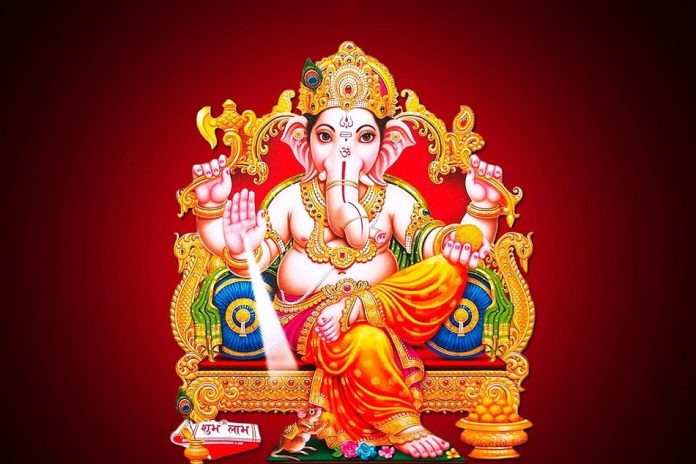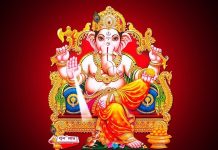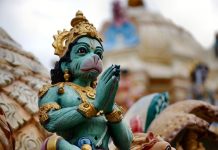Hinduism, one of the world’s oldest religions, is a tapestry of diverse beliefs and practices. Central to this intricate tapestry is the worship of numerous deities, each with their unique attributes and significance. Among the pantheon of Hindu gods and goddesses, Lord Ganesha, often lovingly referred to as Ganapati or Vinayaka, holds a special place in the hearts of millions of devotees. He is not merely a deity but an embodiment of profound values and principles. Lord Ganesha is celebrated as the remover of obstacles and revered as the god of wisdom and intellect. In this article, we embark on a journey to explore the multifaceted significance of Ganesha in Hinduism.
The Remover of Obstacles
1. Obstacle Removal: At the heart of Lord Ganesha’s significance is his role as Vighnaharta, the remover of obstacles. Devotees invoke his name and blessings before embarking on any new venture, whether it is the commencement of a new job, the initiation of a marriage, the launch of a business, or the onset of an academic pursuit. It is believed that Ganesha’s benevolent presence can clear the path of impediments and pave the way for success.
2. Symbolic Representation: Ganesha’s unique and endearing appearance, characterized by his elephant head and a human body, offers a profound message. It serves as a reminder to look beyond external appearances and acknowledge the wisdom within. The elephant head, a symbol of strength and intelligence, signifies that overcoming obstacles demands not only physical prowess but also intellectual acumen.
3. Guardian of Thresholds: Tradition dictates that Ganesha be worshipped at the entrances of homes and temples. Placing his idol at these pivotal entry points is a symbolic gesture, signifying his role as the guardian who prevents negative influences from encroaching upon sacred spaces. By doing so, devotees invoke his protective presence, ensuring that only positive energies are allowed to enter.
The God of Wisdom and Intellect
1. Vidya Pradayaka: Lord Ganesha is also celebrated as Vidya Pradayaka, the giver of knowledge and wisdom. Students, scholars, and seekers of knowledge seek his blessings before undertaking any intellectual pursuit. This aspect of Ganesha underscores the reverence placed on wisdom and the significance of education in Hindu culture.
2. Eternal Learner: Ganesha’s association with his vehicle, the mouse, carries profound symbolism. The mouse, often regarded as a symbol of desire and distraction, is representative of the human mind. Ganesha riding atop the mouse signifies his mastery over the human mind and his ability to control desires through wisdom and intellect.
3. Akshar Brahma: In certain Hindu scriptures, Lord Ganesha is exalted as Akshar Brahma, the ultimate reality that underlies all of creation. This philosophical facet underscores Ganesha’s connection to the essence of the universe and the cosmic order, positioning him as a symbol of both the microcosm and the macrocosm.
Ganesha in Mythology and Legend
To delve deeper into the significance of Lord Ganesha, it is imperative to explore the rich tapestry of Hindu mythology and legends that surround this benevolent deity.
Birth of Lord Ganesha: According to Hindu mythology, Ganesha is the son of Lord Shiva and Goddess Parvati. The story goes that Parvati, while bathing, created Ganesha from the clay of her own body and breathed life into him. She assigned him the task of guarding the entrance to her chamber while she bathed. When Lord Shiva returned and attempted to enter, Ganesha, following his mother’s orders, prevented him from doing so. Enraged by this defiance, Shiva beheaded the young boy. Upon realizing their grave mistake and Parvati’s anguish, Lord Shiva replaced Ganesha’s head with that of an elephant and granted him a boon. He declared that Ganesha would be worshipped before all other gods and that his blessings would be sought at the commencement of every undertaking. Thus, Ganesha’s iconic form and his status as the remover of obstacles were established.
The Churning of the Ocean (Samudra Manthan): Another prominent legend featuring Lord Ganesha is the story of the churning of the ocean. When the Devas (gods) and Asuras (demons) joined forces to churn the ocean to obtain the elixir of immortality (amrita), they needed divine assistance. Lord Vishnu advised them to seek Ganesha’s help, as only he could ensure the successful outcome of this arduous task. True to his reputation, Ganesha played a pivotal role in the churning process, helping to extract the elixir from the depths of the ocean.
The Broken Tusk: Ganesha’s broken tusk carries its own unique symbolism. According to one popular legend, Ganesha used his tusk as a writing instrument to transcribe the Mahabharata, one of the great Indian epics, as it was dictated by the sage Vyasa. This act underscores Ganesha’s commitment to knowledge and his dedication to preserving the wisdom contained in sacred texts.
The Philosophical Dimensions of Ganesha
Beyond the religious and mythological dimensions, Lord Ganesha also holds profound philosophical significance within Hinduism:
Non-Duality (Advaita): The elephant-headed god serves as a symbol of non-duality (Advaita) in Hindu philosophy. His form, which combines both human and animal features, represents the unity of opposites and the interconnectedness of all things. Ganesha embodies the idea that the divine can be found in all aspects of creation.
The Microcosm and Macrocosm: Ganesha’s role as Akshar Brahma underscores his connection to both the individual (microcosm) and the universe (macrocosm). He is seen as the link between the finite and the infinite, symbolizing the ultimate reality that transcends the material world.
Meditative Focus: Meditating upon Lord Ganesha’s form is believed to aid in the practice of dhyana (meditation). His distinctive features and the stories associated with him offer a focal point for meditation, allowing practitioners to contemplate the deeper meanings of life, knowledge, and the removal of obstacles on their spiritual journey.
Conclusion
Lord Ganesha’s significance in Hinduism is multifaceted and profound. As the remover of obstacles, he exemplifies the principle of overcoming challenges with determination and grace. His role as the god of wisdom and intellect underscores the importance of knowledge and education in Hindu culture. Beyond these practical aspects, Ganesha’s rich mythology and symbolism make him a beloved figure, cherished not only for his divine attributes but also for the lessons he imparts.
Ganesha embodies the essence of Hindu philosophy, reflecting concepts of non-duality, the interconnectedness of all things, and the pursuit of spiritual knowledge. His presence at the threshold of homes and temples serves as a reminder of the need to protect sacred spaces from negative influences.
In essence, Lord Ganesha transcends religious boundaries, offering wisdom and guidance to people of diverse backgrounds and beliefs. His enduring popularity and the deep-seated belief in his blessings make him a


























































